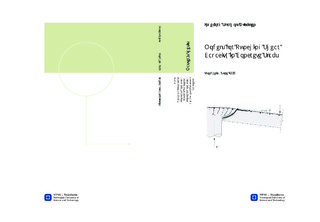| dc.contributor.advisor | Overli, Jan Arve | nb_NO |
| dc.contributor.author | Bølviken, Ingeborg Skarholt | nb_NO |
| dc.date.accessioned | 2014-12-19T12:02:20Z | |
| dc.date.available | 2014-12-19T12:02:20Z | |
| dc.date.created | 2013-09-19 | nb_NO |
| dc.date.issued | 2013 | nb_NO |
| dc.identifier | 649742 | nb_NO |
| dc.identifier | ntnudaim:9067 | nb_NO |
| dc.identifier.uri | http://hdl.handle.net/11250/237254 | |
| dc.description.abstract | Model Code 2010 was published in the spring of 2012 by the International Federation for Structural Concrete (fib), and presents a whole new model for punching shear design. Whereas the method for punching shear design in Eurocode 2 is mainly empirical, the method in Model Code 2010 is grounded in a physical model called the Critical Shear Crack Theory. The method for punching shear design in Model Code 2010 makes the foundation for the punching shear design procedure in the next edition of Eurocode 2.In the first part of the thesis the background to shear and cracking, an introduction to punching shear and a presentation of the punching shear design procedure in Eurocode 2 is presented. Then a literature study is carried out, where the physical model behind the punching shear design in Model Code 2010 is presented in detail. This leads to the final formulations for the punching shear design in Model Code 2010. The next part of the thesis consists of design examples according to Model Code 2010 on an existing project in Oslo, originally designed according to Eurocode 2. The purpose of the calculations is to demonstrate the use of Model Code 2010 and to compare the results from this method to the results by Eurocode 2. Further on, linear analyses in a FEM program are performed, in terms of verifying some of the models used in the design in Eurocode 2. The models investigated are the shear distribution at the basic control perimeter defined in Eurocode 2 and the effect of openings in the slab close to the column edge.The results from the design examples show how Eurocode 2 often underestimates the punching shear capacity. For slabs with large spans however, the capacity seems to be overestimated by Eurocode 2 compared to the results by Model Code 2010. The chance of obtaining too high capacities and therefore risk using a too low amount of shear reinforcement is one of the reasons why further research should be done on slender slabs in the future. The results from the linear analyses are satisfying concerning both models investigated. The shear stresses are conservative in Eurocode 2 compared to the analyses, but the values are quite close and the results by Eurocode 2 are on the safe side. | nb_NO |
| dc.language | eng | nb_NO |
| dc.publisher | Institutt for konstruksjonsteknikk | nb_NO |
| dc.title | Models for Punching Shear Capacity in Concrete Slabs | nb_NO |
| dc.type | Master thesis | nb_NO |
| dc.source.pagenumber | 164 | nb_NO |
| dc.contributor.department | Norges teknisk-naturvitenskapelige universitet, Fakultet for ingeniørvitenskap og teknologi, Institutt for konstruksjonsteknikk | nb_NO |

